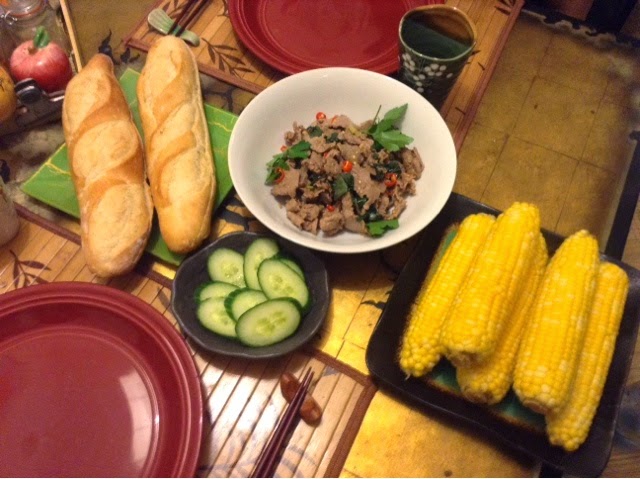Koji is a rice coated in a special mold and used to ferment saké, soy sauce, miso, mirin... And you can also use it to make easy fermented condiments at home and a drink called Amazaké, which is a little more complex to make so it'll have it's own post soon. Koji rice can be found at the Japanese grocer.
Shio-Koji is fermented koji rice with sea salt and water, and Shoyu-Koji is koji rice fermented with shoyu (Japanese soy sauce). They're really good for you, have a really intense umami taste and replace salt well! The recipes to make them are so simple that I just know them by heart! But they require to be mixed everyday until ready, and even though shio-koji will take about 10 days, shoyu-koji can be left to ferment from 1 to 5 months. Remember, you'll have to mix everyday for 5 months!
SHIO-KOJI
-any amount of koji, I used 500g
-30% of the koji worth of FINE SEA salt, so 150g
-enough water to barely cover the rice, plus more the second day
In a container with airtight lid, mix well the koji rice and salt. Add enough water for the rice to be submerged when everything is nicely mixed. The second day the rice will have soaked the water so mix and add enough water again so the rice is just submerged. Then, just mix once a day, for 7-10 days depending on the temperature in your kitchen. After that you can stop mixing and store in the fridge for a couple months.
SHOYU-KOJI
-any amount of koji, let's use 500g again
-double the amount koji rice worth of shoyu, check for naturally brewed on the label and a short list of ingredients
Mix koji rice with shoyu in a container (I had to use 2 - more shoyu-koji for me!). The second day, you'll notice the rice soaked some of the liquid. Mix once daily. You can use after a month, but keep at room temperature and continue stirring daily for a couple months to improve taste. After a couple months you can stop stirring and keep in the fridge for a couple more months.
And now, what to do with the condiments? Shio-Koji can be used raw, in stir -fried and marinades. Shoyu-Koji is not recommended for marinades, except that, use in place of soy sauce in stir-fries, soups, dipping sauces... But remember, both Shio-Koji and Shoyu-Koji burn fast. If I remember well, 1 tsp salt = 2 tsp shio-koji = 4 tsp soy sauce or shoyu-koji. Replace salt everywhere you can!
I like to make pickles with one of the other condiments (or ama-koji if you have it) and just cut some veggies (cucumbers, carrots, peppers...), put them in a small ziplock and add a spoon or two of shio-koji or shoyu-koji. Leave it in the fridge all day and it should be ready for supper! So good and simple.
Here are some websites with recipes using shio-koji or shoyu-koji. I'll post about ama-koji (sweet fermented rice porridge) soon!:
Cooking with Koji:
http://cookingwithkoji.wordpress.com
Nami Chen from JustOneCookBook created a couple shio-koji recipes for her sponsor here:
http://www.hikarimiso.com/recipes/shiokoji/
Kojiya:
http://www.kojiya.jp/recipes/index.html
Koji recipes at Cookpad, the biggest Japanese recipe website:
https://en.cookpad.com/search/Koji



















































